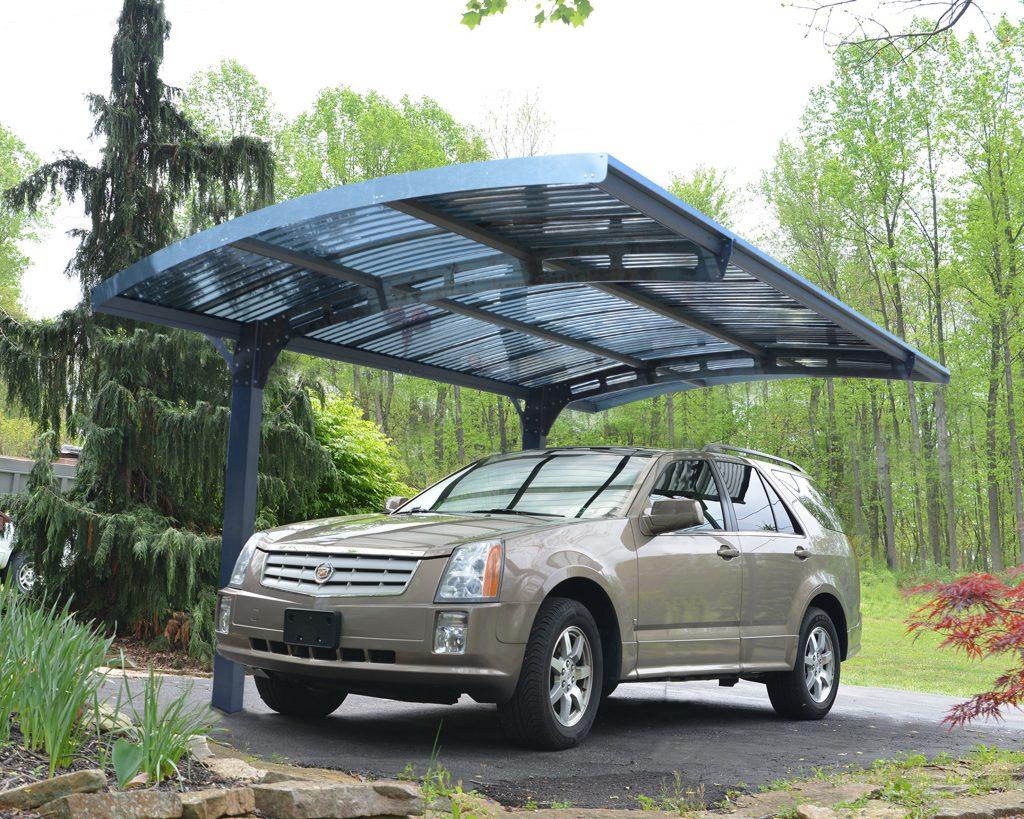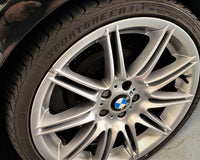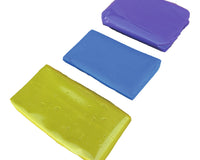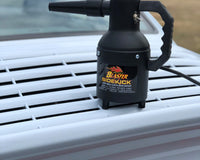When the sun's rays beat down on your car day after day, they can wreak havoc on its appearance and performance. From faded paint to cracked interiors, sun damage can significantly reduce the lifespan and value of your vehicle. However, with a few simple steps and precautions, you can shield your car from the harmful effects of the sun and ensure its longevity and aesthetic appeal.
This ultimate guide will walk you through everything you need to know to protect your car from sun damage.
Parking Strategy
Choosing the right parking spot for your car is the first line of defence against sun damage. Direct exposure to the sun's intense rays can lead to faded paint, deteriorating interiors, and even mechanical issues over time. To mitigate these risks, follow these parking strategies:
- Shaded Parking:
Whenever possible, opt for shaded parking areas. Garages, carports, and parking structures provide an excellent shield against the sun's harmful effects. Parking your car in these spaces not only protects it from UV rays but also helps maintain a cooler interior temperature, reducing the risk of heat-related damage.
- Natural Shade:
If covered parking is not available, consider parking your car under natural shade sources such as trees or tall buildings. However, be cautious about parking under trees that might drop sap, leaves, or other debris onto your car, potentially causing other types of damage.
- Car Covers:
Invest in a high-quality car cover designed to block UV rays. These covers are typically made from reflective materials that prevent sunlight from penetrating to your car's surface. When using a car cover, ensure that your car is clean before applying it to prevent scratching.
Regular Washing and Waxing
Maintaining the exterior of your car through regular washing and waxing is essential to prevent sun damage and keep your vehicle looking its best. The sun's UV rays, combined with dirt and contaminants, can cause your car's paint to fade and lose its lustre over time. Follow these steps to ensure your car's exterior remains protected:
- Washing Routine:
Regularly wash your car to remove dirt, bird droppings, and other debris that can degrade your paint. Use a gentle automotive-specific soap and a microfiber wash mitt to avoid scratching the surface. Wash your car in a shaded area or during cooler parts of the day to prevent water spots caused by rapid evaporation.
- Waxing for Protection:
After washing, apply a high-quality car wax that contains UV inhibitors. Waxing creates a protective barrier on your car's surface that shields it from UV radiation. The wax also helps repel water, making it harder for contaminants to stick to your car's paint. Consider waxing your car every few months for optimal protection.
Window Tinting
Window tinting is a practical solution to mitigate sun damage to your car's interior. It not only enhances privacy but also reduces the amount of sunlight that enters your car, protecting your dashboard, seats, and other interior components. Best window tinting gives you the following benefits:
- UV Protection:
Window tinting film contains UV-blocking properties that significantly reduce the amount of harmful ultraviolet radiation that penetrates your car's windows. UV rays can cause fading, discoloration, and cracking of your interior surfaces over time. Tinted windows act as a barrier, helping to preserve your car's aesthetics and value.
- Heat Reduction:
Tinted windows can also help keep your car's interior cooler by reducing the amount of heat that enters the cabin. This not only enhances comfort for you and your passengers but also reduces the strain on your air conditioning system, potentially extending its lifespan.
You can also use sunshades as a replacement of tinted windows. Best Sunshades are practical accessories that provide an additional layer of defence against the sun's relentless rays. These reflective panels are designed to fit your car's windshield and rear window, effectively blocking out direct sunlight and heat.
Interior Care
Protecting your car's interior from sun damage involves more than just blocking UV rays. Regular care and maintenance can go a long way in preserving the appearance and functionality of your car's interior components:
- UV-Protectant Products:
Invest in high-quality best UV-protectant products designed specifically for automotive interiors. These products create a barrier that shields your dashboard, door panels, and other interior surfaces from UV radiation. Applying UV protectant not only prevents fading and cracking but also maintains the suppleness of materials like vinyl and leather.
- Leather Maintenance:
If your car has leather seats or interior components, they require special attention. Leather can become brittle and discoloured when exposed to UV rays. Use a best leather conditioner with UV inhibitors to nourish and protect the leather, keeping it soft and preventing colour fading.
- Cleaning and Vacuuming:
Regularly clean and vacuum your car's interior to remove dirt, dust, and debris that can cause wear and tear over time. Use a soft-bristle brush or a microfiber cloth to gently clean surfaces. Avoid using harsh chemicals that could damage or discolour your car's interior materials.
Tire Maintenance
Tires are often overlooked when it comes to sun damage prevention, but excessive exposure to sunlight can lead to sidewall cracking and premature aging. Protect your tires with these steps:
- Proper Inflation:
Maintain the recommended tire pressure as specified in your car's manual. Properly inflated tires are more resistant to damage and will wear more evenly. Underinflated tires generate excess heat, which can exacerbate sun damage.
- Tire Dressing with UV Protection:
Apply a specialized tire dressing that contains UV protection. This product not only enhances the appearance of your tires but also helps shield them from the sun's harmful rays. Regular application of tire dressing can help prevent sidewall cracking and maintain the overall health of your tires.
- Regular Maintenance Checks
Scheduled maintenance checks are essential for identifying and addressing potential sun damage issues before they escalate. Regular inspections can prevent minor problems from becoming major headaches:
- Exterior Inspection:
Regularly inspect the exterior of your car for signs of sun damage, such as fading paint, oxidized surfaces, and cracked trim. Catching these issues early allows you to take corrective measures before they worsen.
- Cooling System Care:
The sun's heat can place additional stress on your car's cooling system. Make sure your radiator, hoses, and coolant are in good condition to prevent overheating, especially during hot weather. A well-maintained cooling system is crucial for preventing engine damage caused by excessive heat.
- Fluid Levels and Filters:
Regularly check and maintain fluid levels, including oil, transmission fluid, and brake fluid. Dirty or clogged air and cabin filters can hinder the performance of your car's ventilation system, causing discomfort and potential damage to interior components.
Avoid Extreme Heat
Driving in extreme heat, especially during the peak of the day, can subject your car to additional stress and potential sun damage. Taking precautions and adjusting your driving habits can help minimize these risks:
- Plan Your Trips:
Whenever possible, schedule your driving trips during cooler parts of the day, such as early morning or late afternoon. This reduces the strain on your car's engine and cooling system, as well as limits the exposure of your car's exterior and interior to intense sunlight.
- Park Strategically:
If you need to make stops during your journey, opt for shaded parking areas or covered structures to shield your car from direct sunlight. Use sunshades on your windshield and rear window to keep the interior cooler and protect sensitive components.

- Monitor Engine Temperature:
Keep an eye on your car's temperature gauge to ensure it doesn't overheat. If the temperature starts to rise unusually, pull over in a safe location and allow the engine to cool down before continuing. Overheating can be exacerbated by high ambient temperatures and can lead to engine damage if not addressed promptly.
Regular Detailing
Last but not the least, Enlisting the services of a professional detailer for regular car detailing can significantly contribute to protecting your car from sun damage. It can contribute in the following ways:
- Thorough Cleaning and Restoration:
Professional detailing involves a comprehensive cleaning and restoration process that goes beyond what regular washing can achieve. Detailers use specialized products and techniques to remove stubborn dirt, contaminants, and stains from both the exterior and interior surfaces of your car.
- Paint Correction:
Detailers can perform paint correction to address more significant imperfections, such as deep scratches, swirl marks, and water spots. This process restores the clarity and depth of your car's paint, enhancing its overall appearance and providing a smooth canvas for protective treatments.
- Interior Care and Protection:
Detailers pay meticulous attention to your car's interior, using specialized products to clean, condition, and protect various surfaces. They can treat leather seats, rejuvenate plastic trim, and ensure that all interior components receive proper care to prevent sun damage and deterioration.
Conclusion
In conclusion, protecting your car from sun damage is a combination of preventive measures, regular maintenance, and proper care. By following the steps outlined in this ultimate guide, you can extend the lifespan of your vehicle, maintain its resale value, and enjoy an aesthetically pleasing car for years to come. Remember that consistent efforts to shield your car from the sun's harmful effects will pay off in the long run, ensuring that your investment remains in top-notch condition.




